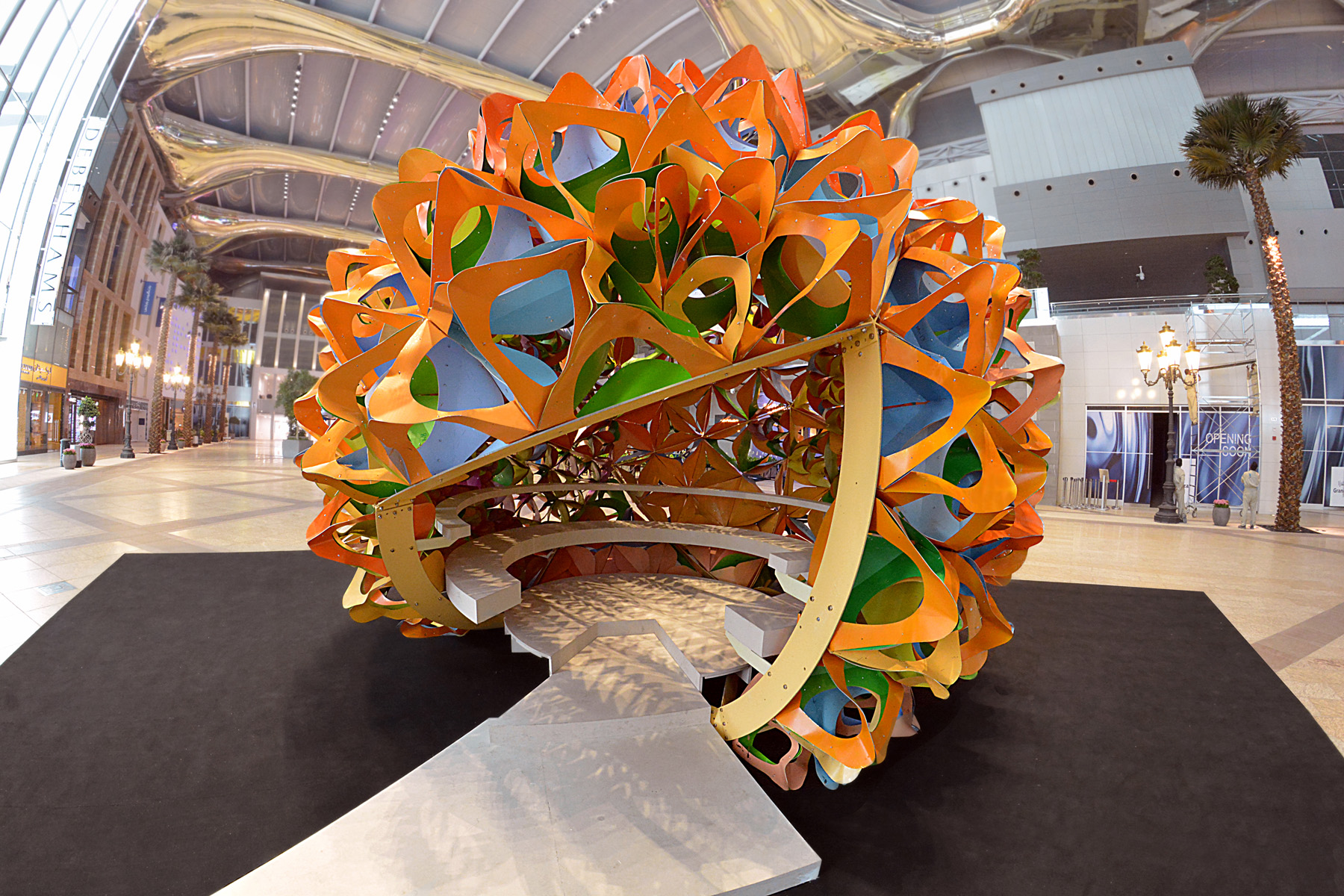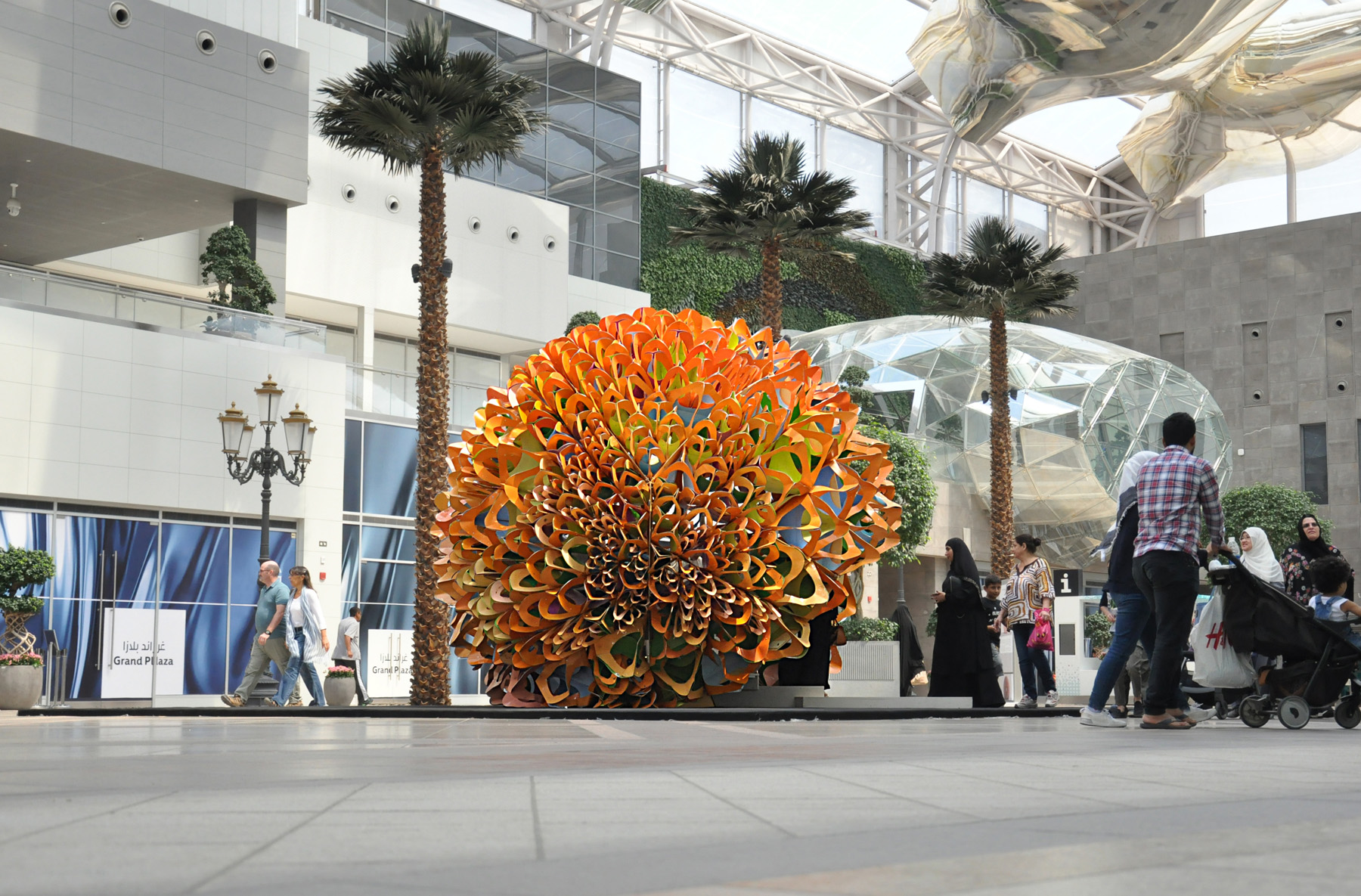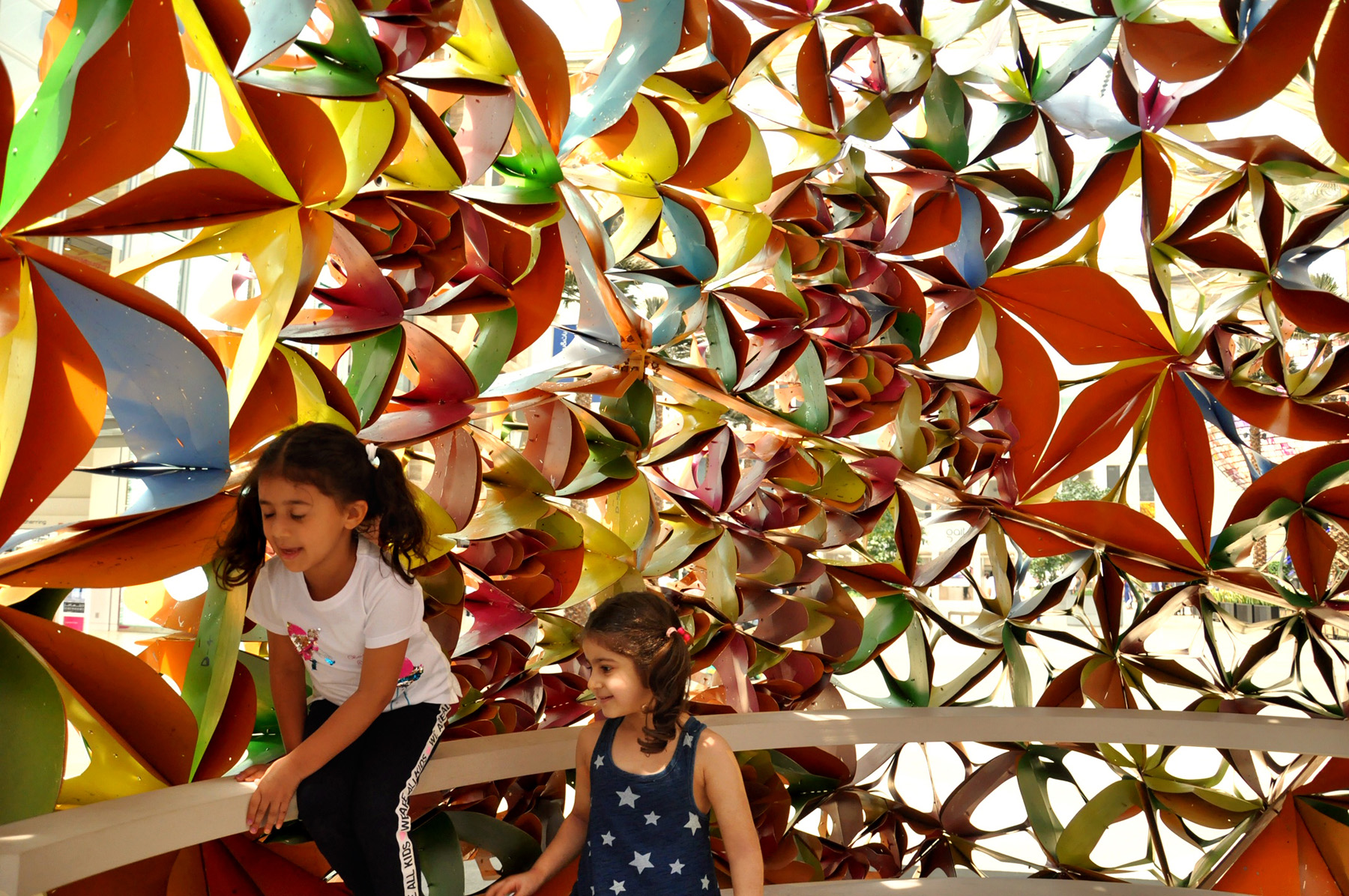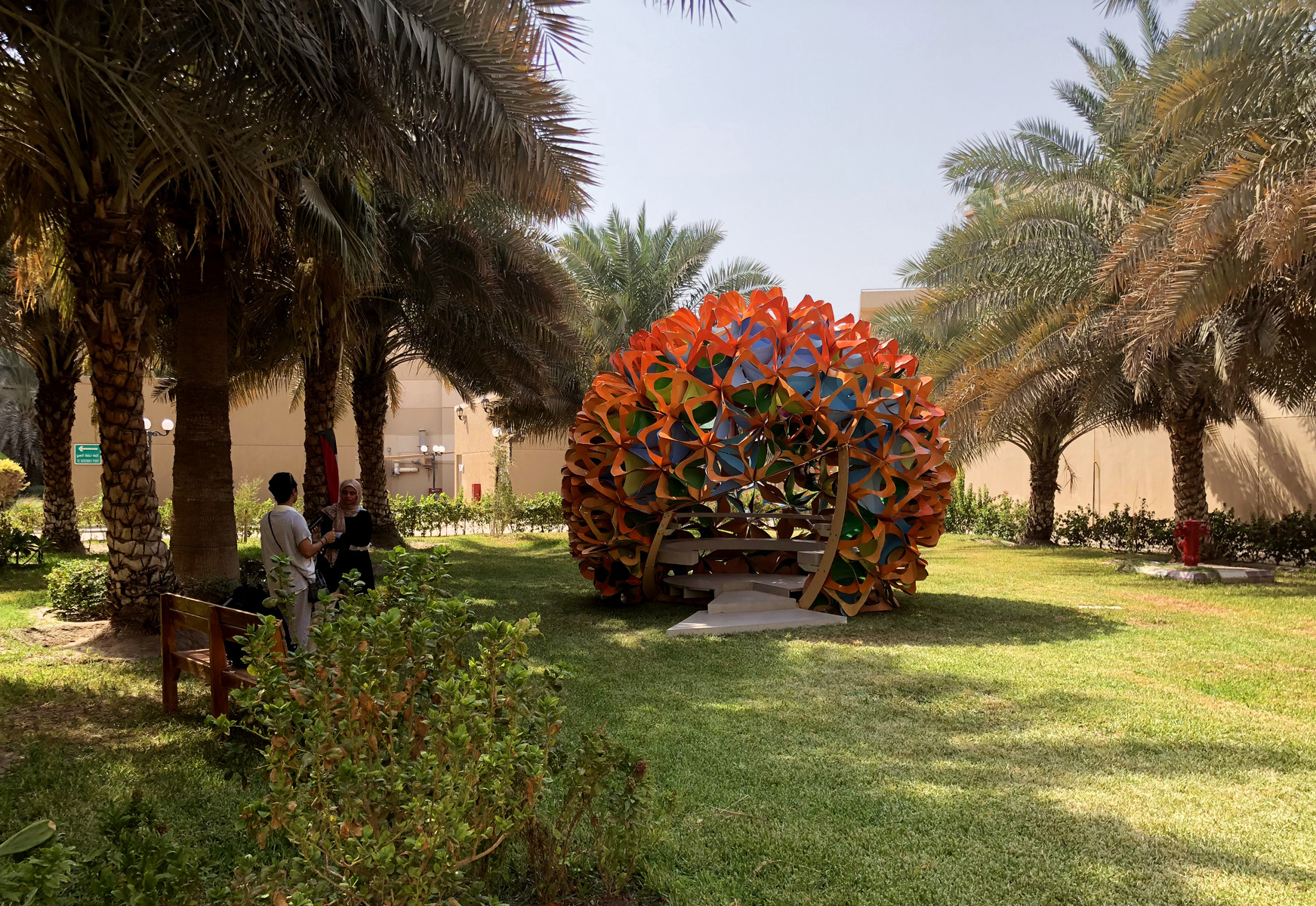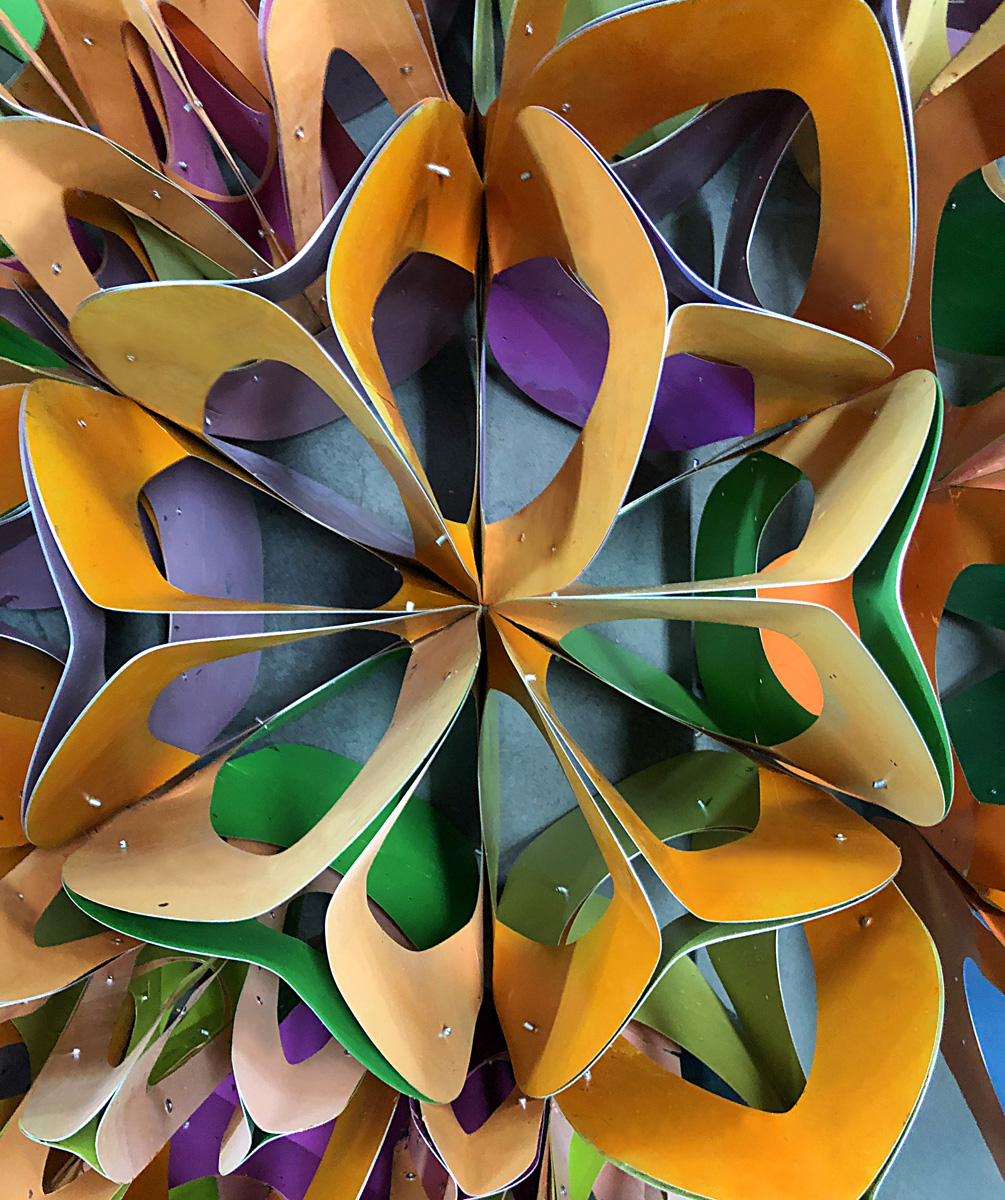FILTERED SPACE
Sulaiman Al Othman, Jeroen van Ameijde (Kuwait, 2018)

The ‘Filtered_Space’ pavilion was a temporary structure located in The Avenues mall in Kuwait, which allowed visitors to experience a digitally designed and fabricated space based on the filtering of light and views. It was the outcome of a collaborative workshop between tutors from the Architectural Association in London and industry partners in Kuwait, with the participation of local students. The pavilion was on display for a period of three weeks, after which it was relocated to the courtyard garden of the College of Architecture at Kuwait University.
The design was developed in relation to a research agenda which focuses on the theme of ‘performative envelopes’, which investigates how information-based design processes can produce architecture that is sensitive to the cultural, social and climatic characteristics of its environment. The pavilion consists of a geodetic primary structure of modular steel ribs and a three-dimensional ‘skin’, which is constructed out of a number of folded aluminium components that vary in size, colour and porosity. The different densities of components were arranged in relation to the digital mapping of the light levels and views to the surroundings. This process demonstrated some of the potentials of data-driven design, such as a strategy to arrange different building components to mediate the qualities of space, in relation to the surrounding environment. It also created a unique and playful interior space that was open to the public.
The pavilion is designed in response to a high-resolution, 360 degree set of images that was captured in the exact location of structure. The light and colour values of the surroundings were mapped onto a virtual sphere around the intended inhabitable space. Using specific computational design and 3D modelling tools including RHINO / GRASSHOPPER, it was possible to translate the data into a pattern of subdivisions of the triangulated surface of the sphere. In subsequent steps, a pattern of open and closed facade components was designed to form a three-dimensional filtering skin, supported by a structural frame that is arranged according to the geodesic dome principle. The character and possibilities of the specific material were incorporated in the design, anticipating the filtering skin system’s construction out of thin sheet metal. A specific work flow was created to export the building information modelling (BIM) information towards the equipment used for the laser cutting manufacturing of the facade components. The resulting system of steel ribs and mass-customised, folded aluminium components was assembled on site over the course of a three-day period.
The project on display at The Avenues demonstrated a possible outcome of an approach towards high-resolution construction materials, that create optimised functional architectural environments. It is an example of processes that can be applied to the design of buildings for a wide range of scales and functions. It shows how new and innovative digital design and construction methodologies can produce sophisticated architectural structures, adapted to the invisible forces that shape our urban environments.
Project Credits: Coordination and Programme Staff: Sara Abou Saleh, Rashed Al Mubarak, Sulaiman Al Othman, Jeroen van Ameijde. Participants: Jassim Al Abbad, Lulwa Al Bader, Lulwa Al Dihani, Reem Al Humaidan, Noora Al Melhim, Wadha Al Sabeeh, Lulu Al Subaie, Aishah Al Shatti, Ahmad Hisham, Sara Al Zeer. Collaborators: Dina Abou Saleh, Andrea Bugli, Abdullah Bukhamseen, Mohammed Al Awadhi, Meshal Al Khamees, Hanan Al Kouh, Mohammad Al Marzoug, Yuser Al Mutawa, Salman Qasem, Ahmed Suleiman. Sponsors: Platinum Sponsor: PACE | Architecture, Engineering + Planning Bronze Sponsor: Gulf Consult Pavilion Location Sponsor: The Avenues / Mabanee Workshop Location Sponsor: Promenade Culture Centre / The Promenade Mall. In collaboration with: Kuwait University, Royal Institute of British Architects, KUZ Store, Kuwait
